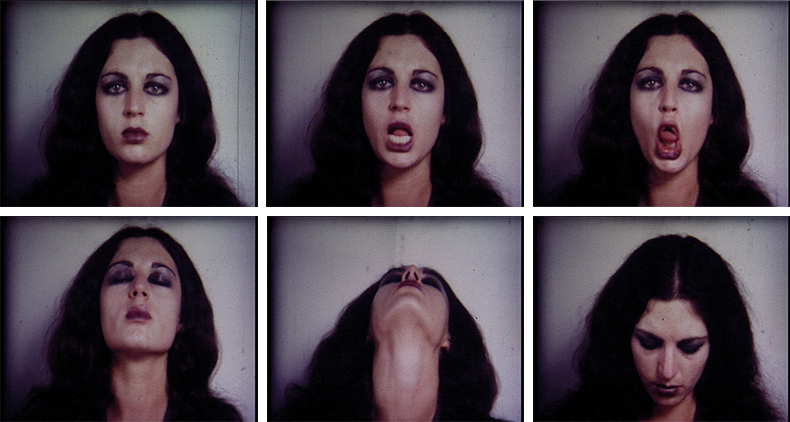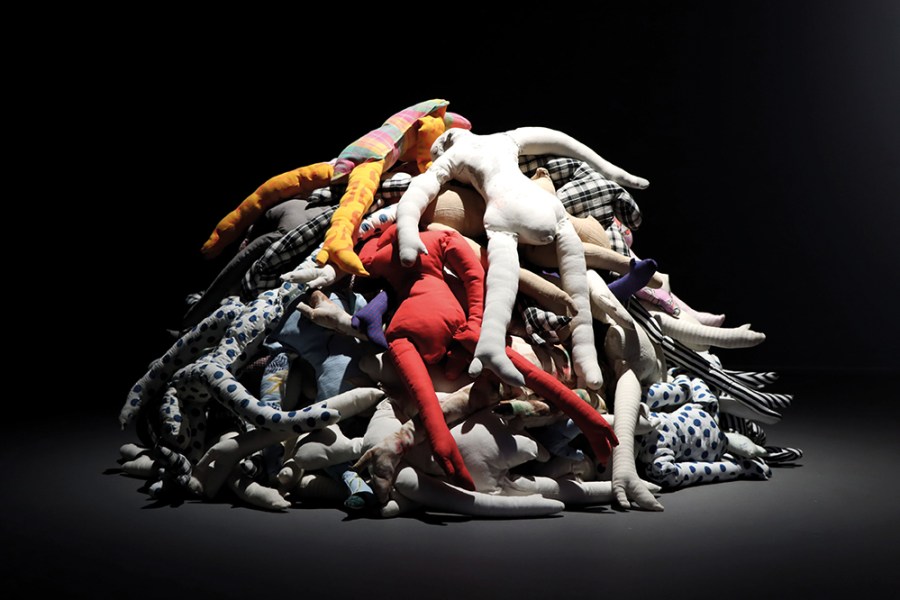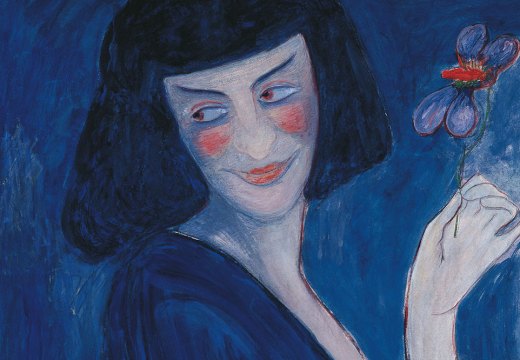From the February 2024 issue of Apollo. Preview and subscribe here.
In 2002, as director of the Deste Foundation in Athens, Katerina Gregos put together a show called ‘Fusion Cuisine’. Its all-female line-up included Tracey Emin, Catherine Opie, Lee Bul and Tania Bruguera, and through their work the exhibition responded to shifting ideas of womanhood in the new millennium. This was, Gregos believed, the first feminist exhibition in a major Greek institution. It was not warmly received. Feminism was yesterday’s news, she was told; a done deal. Some objected to an all-woman show on principle.
Gregos’s feminist gesture was out of phase. In Sarah Ditum’s account of noughties pop culture, Toxic (2023), the 2000s are dubbed the ‘Upskirt Decade’, as a peculiarly voyeuristic and performative misogyny worked its way back into the cultural mainstream under the guise of liberation. Feminists were lampooned as the fun police, and those pursuing agendas associated with the women’s movements were dismissed as b-o-r-i-n-g.
Twenty years on, I hope Gregos can summon a wry laugh at the cultural naivety of the early 2000s and congratulate herself on her prescience (or, more accurately, her persistence). Now director of EMST, the National Museum of Contemporary Art in Athens, she has launched a year-long programme of women artists, including an all-female hang of the collection display. This time around, in the wake of the #MeToo movement, the US Supreme Court overturning the constitutional right to abortion, and various studies detailing gender bias in the art world, nobody is accusing Gregos of being out of step with the times.
The year of art by women in the Athens museum overlaps with ‘Women in Revolt!’ at Tate Britain (until 7 April) and ‘Maestras’, the Thyssen-Bornemisza Museum’s feminist take on art history (until 4 February). EMST is a young institution; it opened in 2021. Its zone of interest is the broader eastern Mediterranean. The women in its collection have engaged in different battles, other wars, from their Western European sisters. Not all conflicts have been resolved. The mood of the rehang is intense.
Maria Loizidou’s installation War Loot (2000) is a large pile of rag dolls in homely textiles. Made for her exhibition ‘Trauma’ in Nicosia, it coincided with the start of the long project to find, exhume and identify the 2,002 Cypriots who disappeared during the intercommunal fighting in 1963–64 and the Turkish invasion of 1974. Most (though not all) were men and boys. Loizidou addresses women as victims of sexual violence in conflict, and as vessels of grief: the mothers, daughters and wives left behind without bodies to bury.
The digitally manipulated Barbie in Despina Meimaroglou’s photograph 11 o’clock News (1997) casts us a pleasing but uneasy smile as she clasps her hands over a naked crotch bearing the dark shadow of pubic hair. The doll’s face carries the bruised features of a young woman who appeared on Greek public television detailing her experience of abuse. Meimaroglou draws a connection between misogynistic violence and unrealistic beauty standards – women invited to turn themselves into objects for consumption but condemned always to fail in their quest for self-perfection.
The centrepiece of EMST’s programme is the first retrospective devoted to Leda Papaconstantinou. Now based on the island of Spetses, as a young woman Papaconstantinou left Greece after the 1967 coup. In the UK she studied at Maidstone College of Art, which was going through a radical anti-hierarchical phase in the wake of the May 1968 protests. There she collaborated with Sally Potter and Marc Camille Chaimowicz, among others, and set aside painting to work with performance and film.

Stills from Oh Godard (1969) by Leda Papaconstantinou. Photo: courtesy and © the artist
I imagine influence at the college flowed both ways. Papaconstantinou was stimulated by the fresh ideas and experimental forms she encountered at Maidstone, and brought with her an international outlook, tenacity and unabashed interest in the erotic. Her early films and ‘events’ namecheck Jean-Luc Godard, Jean Genet and Sergei Eisenstein, as well as Greek myth and classical drama. She was (and remains) interested in the balance of power bound up in display and exposure.
A number of early works focus on the mouth. In the calculatedly awkward short They (1971) a man first forces his tongue between a woman’s tightly pursed lips, then licks the area around her open mouth. In Oh Godard (1969), Papaconstantinou performs for the camera, her beautiful face painted in dramatic silvery make-up framed by billows of dark hair. With controlled gaze, she repeats a slow sequence: opening her mouth wide, sticking her tongue fully out, and then closing her lips around it. The effect is both uncanny and obscene. Why Godard? Papaconstantinou was fascinated by the attention the director drew to Jean-Paul Belmondo’s lips.
Another work addressing the male object of desire – Yes + No (2011) – was first staged at the Bathhouse of the Winds, the last remaining Ottoman bathhouse in Athens. At EMST, two films of naked, bathing men play in a chamber at the top of steeply raked and barricaded steps. Craning to watch them, we visitors expose our own interest in these naked male bodies. In two accompanying films, a female guard describes the process of dressing and undressing, and the sense of protection her uniform and weapons afford.
Papaconstantinou’s attention to which bodies are available to the gaze, which afforded protection (and, in other works, which considered worth mourning), align her with a number of international conversations, but her work is also highly individual and sensitive to context. She does not conform: she questions and complicates. Programming a museum year of female artists may be an explicitly feminist gesture, but the stuff on show? That’s just art by women.
From the February 2024 issue of Apollo. Preview and subscribe here.
Unlimited access from just $16 every 3 months
Subscribe to get unlimited and exclusive access to the top art stories, interviews and exhibition reviews.














![Masterpiece [Re]discovery 2022. Photo: Ben Fisher Photography, courtesy of Masterpiece London](http://www.apollo-magazine.com/wp-content/uploads/2022/07/MPL2022_4263.jpg)
It’s time for the government of London to return to its rightful home